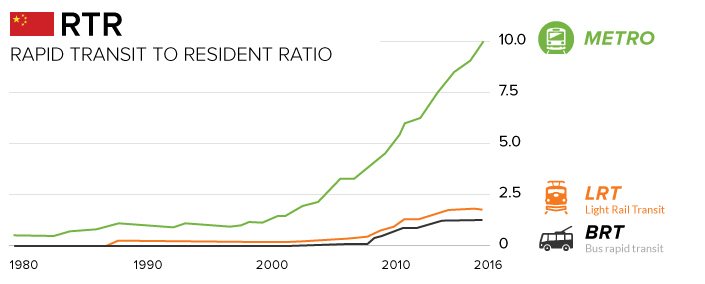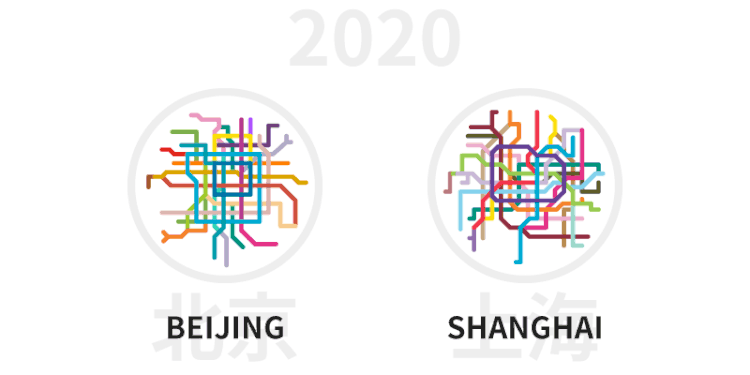After decades of hyper-growth and worsening pollution, China has fully embraced rapid transit as a way to keep cities moving. By 2020, China aims to have 7,000 km (4,300 mi.) of rapid transit lines, more than five times what exists in the U.S. today.
The following animation from Peter Dovak shows this rapid transit revolution playing out by year:

MIND THE GAP
In the above animation, there’s a distinct uptick in the number of projects started after 2004. It was in this year that the government lifted a ban on new metro construction, after worsening congestion and pollution caused the government to rethink their stance. There has been a rapid transit boom in the country ever since.
Soon, minimum population requirements for cities looking to build subway systems will be halved from 3 million to 1.5 million, and this move is expected to set off an even bigger wave of infrastructure investment in cities throughout the country.
RISING RATIOS
Hundreds of kilometers of track are being added each year. As a result of this unparalleled pace of metro construction, China’s ratio of Rapid Transit to Residents (RTR) has risen steeply over the last 15 years.

RTR is a ratio that compares the length of rapid transit lines (measured in kilometers) with the country’s urban population (measured in millions of people). As you can see, China is making great strides in building urban transit networks, though it is still catching up to countries like Germany, which has a RTR of 81.
Chinese cities have a blend of attributes that make constructing metro lines an appealing option: fewer regulatory hurdles, a low cost of labor, and a high-density urban fabric. Also, because transit is treated as an essential public service (i.e. not expected to be profitable), China’s metros provide affordable mobility to its citizens. Even with Beijing’s recent metro fare increase, most rides only cost about ¥3 to ¥8, or $ 0.45 to $ 1.45.
Shanghai is now home to the longest metro system by route length, and the Beijing Subway has the highest ridership in the world. Not bad for cities that lacked any substantive transit system until the 1990s.

By 2020, China is expected to have 220+ cities with over a million inhabitants, so as long as the government can continue to provide the resources and funding to expanding transit networks, the building boom will likely continue unabated.
The post Animation: China’s Rapid Transit Boom (1990 – 2020) appeared first on Visual Capitalist.
source http://capitalisthq.com/animation-chinas-rapid-transit-boom-1990-2020/





No comments:
Post a Comment